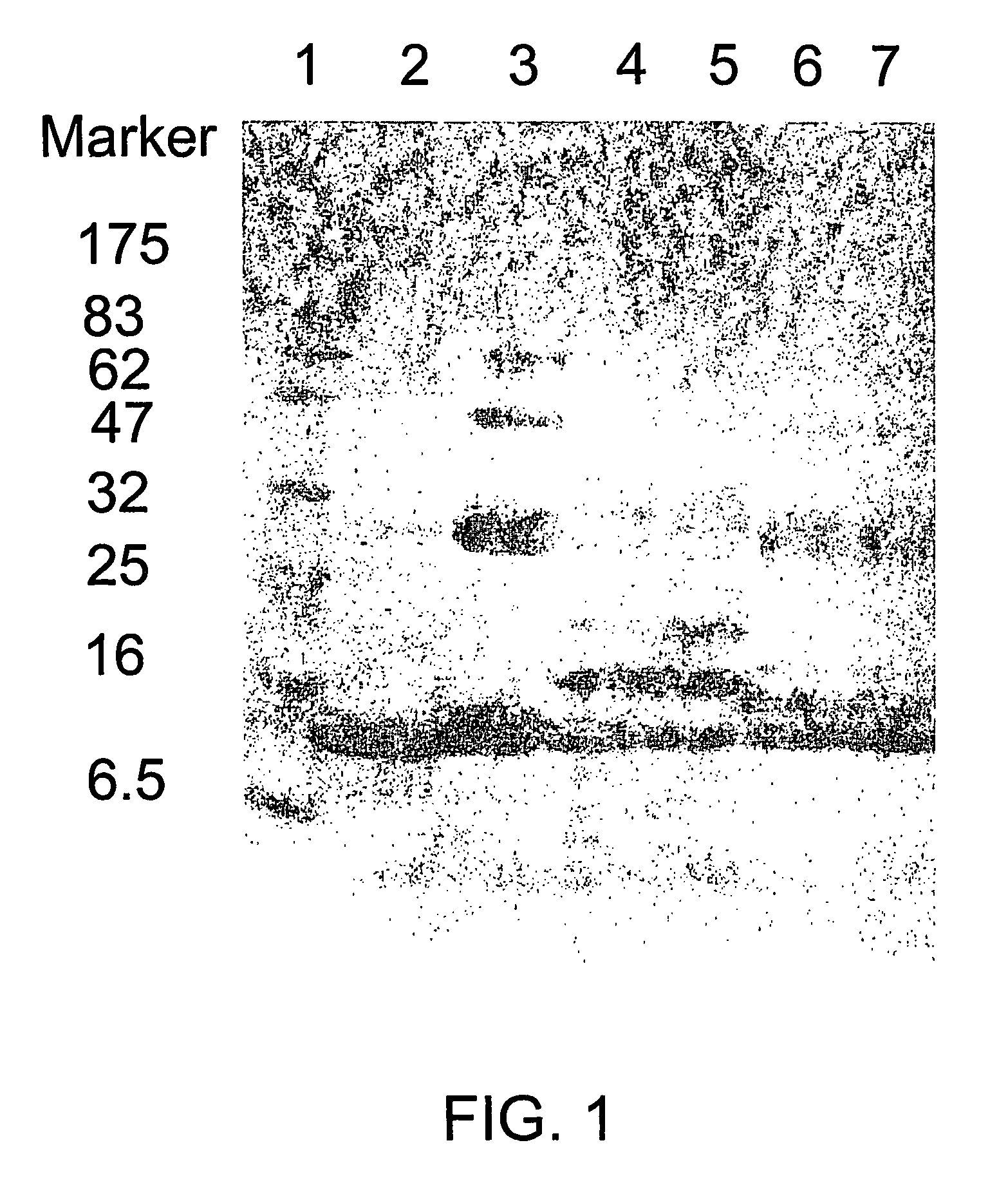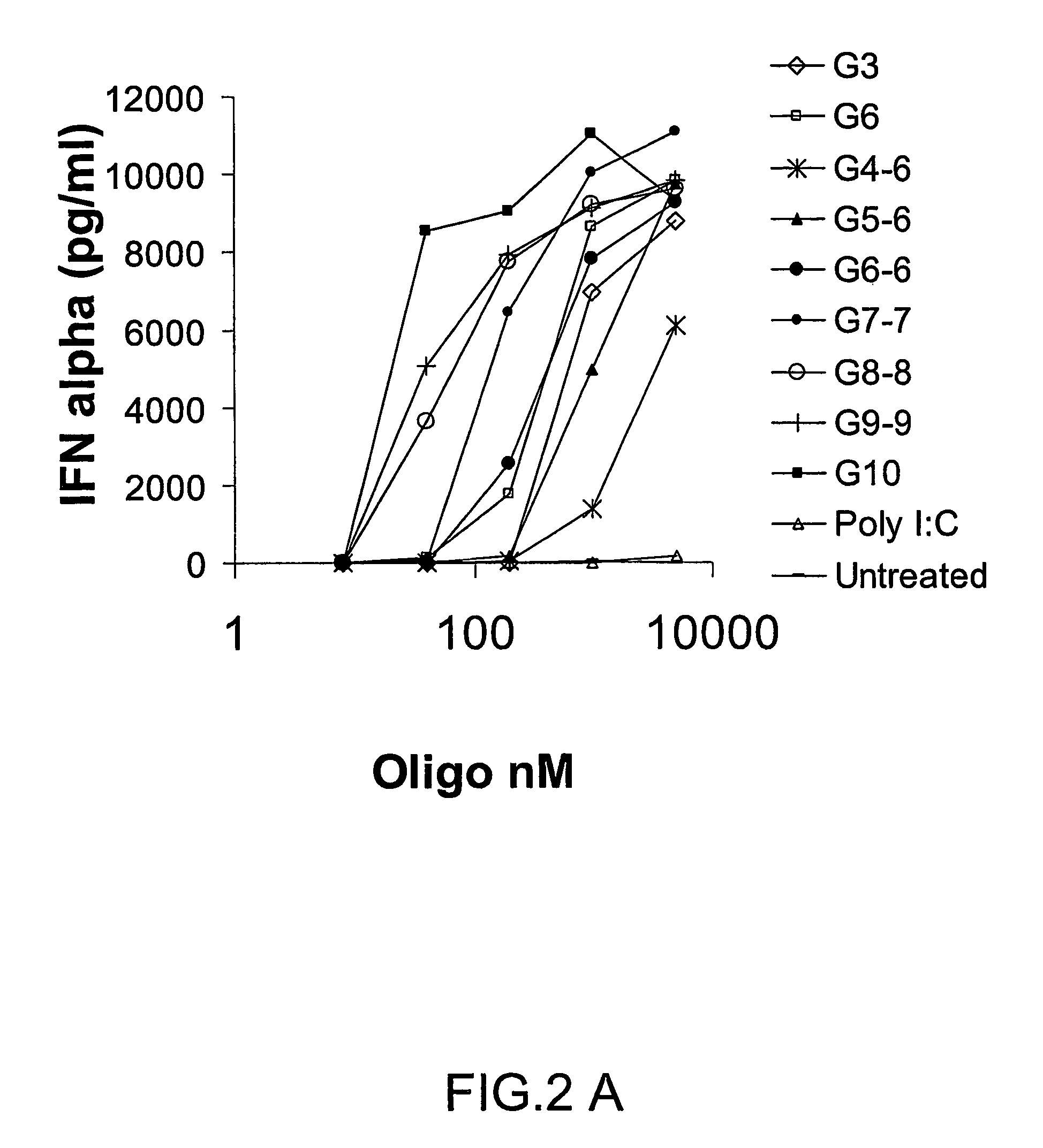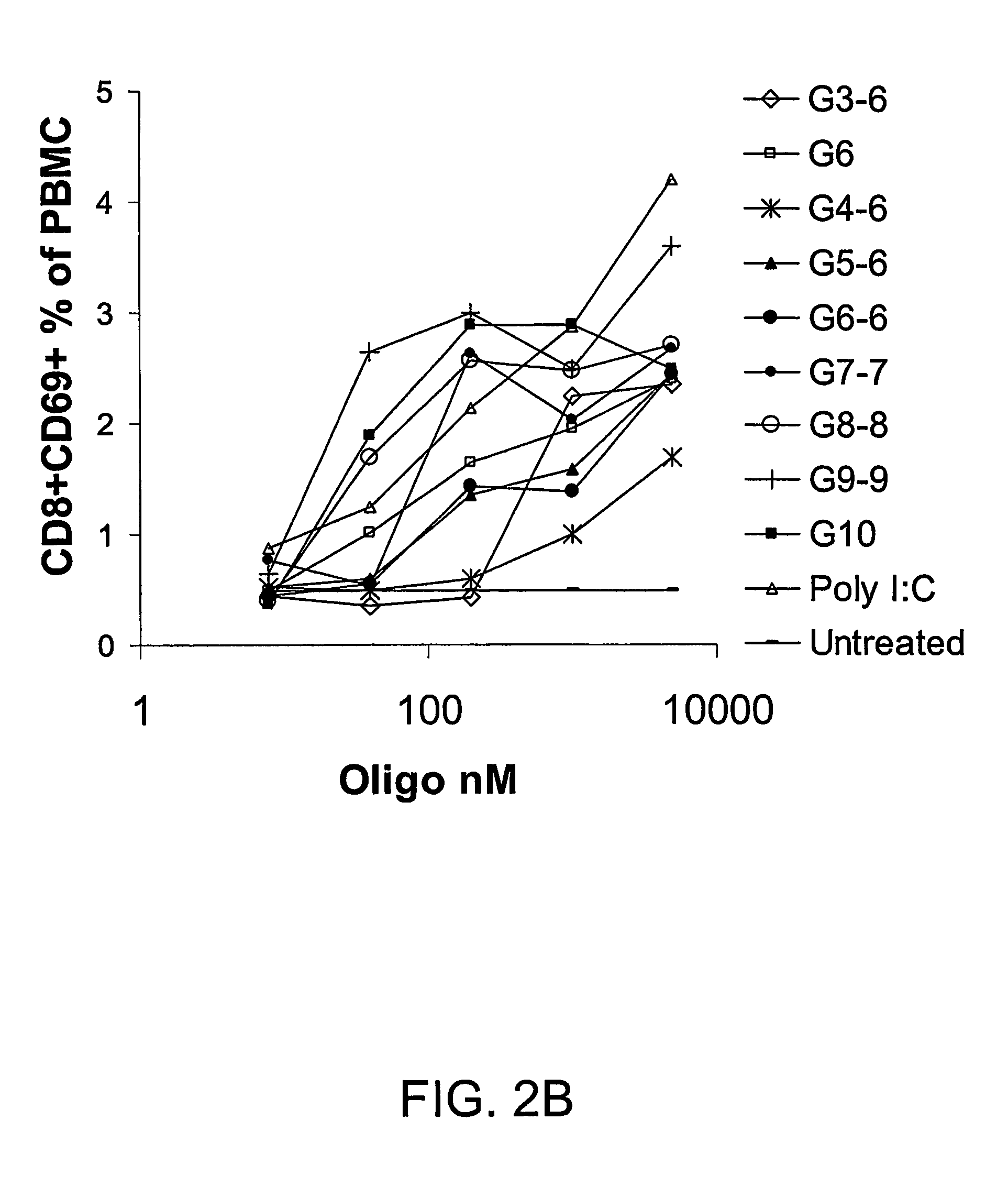Melan-A- carrier conjugates
a carrier conjugate and melana technology, applied in the field of vaccines, immunology and medicine, can solve the problems of limited success in strategies, purification and incubation of autologous, and insufficient administration of purified proteins alone to elicit a strong immune response, and achieve the effect of enhancing b and t cell responses
- Summary
- Abstract
- Description
- Claims
- Application Information
AI Technical Summary
Benefits of technology
Problems solved by technology
Method used
Image
Examples
example 1
[0279]Generation of p33-HBcAg VLPs.
[0280]The DNA sequence of HBcAg containing peptide p33 from LCMV is given in SEQ ID NO: 15. The p33-HBcAg VLPs were generated as follows: Hepatitis B clone pEco63 containing the complete viral genome of Hepatitis B virus was purchased from ATCC. The gene encoding HBcAg was introduced into the EcoRI / HindIII restriction sites of expression vector pkk223.3 (Pharmacia) under the control of a strong tac promoter. The p33 peptide (KAVYNFATM) (SEQ ID NO: 80) derived from lymphocytic choriomeningitis virus (LCMV) was fused to the C-terminus of HBcAg (1-185) via a three leucine-linker by standard PCR methods. A clone of E. coli K802 selected for good expression was transfected with the plasmid, and cells were grown and resuspended in 5 ml lysis buffer (10 mM Na2HPO4, 30 mM NaCl, 10 mM EDTA, 0.25% Tween-20, pH 7.0). 200 μl of lysozyme solution (20 mg / ml) was added. After sonication, 4 μl Benzonase and 10 mM MgCl2 was added and the suspension was incubation f...
example 2
[0284]Cloning, Expression and Purification of GA VLP
[0285]The cDNA of GA phage coat protein was amplified from GA phage by reverse transcription followed by a PCR amplification step, using the RevertAid First strand cDNA synthesis Kit (Fermentas). The cDNA was cut with the enzymes NcoI and HindIII, and cloned in vector pQβ185 previously cut with the same enzymes, leading to plasmid 355.24, harboring GA cDNA. The sequence of the inserted cDNA was checked by DNA sequencing.
[0286]Plasmid 355.24 was transformed in E. coli JM109. Expression was performed essentially as described for Qβ VLP. A single colony was inoculated in LB medium containing 20 mg / L Ampicillin overnight without shaking. This inoculum was transferred the next day into a larger flask containing M9 medium supplemented with 1% casaminoacids, 0.2% glucose and 20 mg / L Ampicillin, and incubated under shaking for 14-20 h.
[0287]GA VLP was isolated essentially as described for Qβ VLP. Cells were lysed, and the cleared lysate wa...
example 3
[0288]Fluorescein Labeled CpG-Containing Oligonucleotides can be Packaged into BKV, HBcAg and Qβ-VLPs.
[0289]VLPs produced in yeast contain small amounts of RNA which can be easily digested and so eliminated by incubating the VLPs with RNase A. The highly active RNase A enzyme has a molecular weight of about 14 kDa and is small enough to enter the VLPs to eliminate the undesired ribonucleic acids. Recombinantly produced BKV VLPs (SEQ ID NO: 12) were concentrated to 1 mg / ml in PBS buffer pH7.2 and incubated in the absence or presence of RNase A (200 μg / ml, Roche Diagnostics Ltd, Switzerland) for 3 h at 37° C. After RNase A digestion BKV VLPs were supplemented with 75 nmol / ml 5′-fluorescein labeled phosphorothioate CpG-FAM oligonucleotide (oligonucleotide from SEQ ID NO: 34) and incubated for 3 h at 37° C. Subsequently BKV VLPs were subjected to DNaseI digestion for 3 h at 37° C. (40 u / ml AMPD1, Sigma, Division of Fluka AG, Switzerland) or loaded without DNaseI digestion. The samples w...
PUM
| Property | Measurement | Unit |
|---|---|---|
| diameter | aaaaa | aaaaa |
| pH | aaaaa | aaaaa |
| molecular weight | aaaaa | aaaaa |
Abstract
Description
Claims
Application Information
 Login to View More
Login to View More - R&D
- Intellectual Property
- Life Sciences
- Materials
- Tech Scout
- Unparalleled Data Quality
- Higher Quality Content
- 60% Fewer Hallucinations
Browse by: Latest US Patents, China's latest patents, Technical Efficacy Thesaurus, Application Domain, Technology Topic, Popular Technical Reports.
© 2025 PatSnap. All rights reserved.Legal|Privacy policy|Modern Slavery Act Transparency Statement|Sitemap|About US| Contact US: help@patsnap.com



